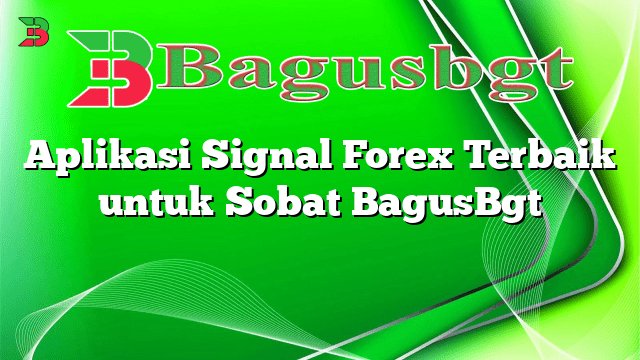Hello readers, welcome to this comprehensive article on Forex trading indicators. In this piece, we will explore the various indicators used in the Forex market, their strengths, weaknesses, and alternative options. Whether you are a beginner or an experienced trader, understanding these indicators can significantly enhance your trading strategy and help you make informed decisions. So, let’s dive into the world of Forex trading indicators.
1. Moving Average (MA)
The Moving Average (MA) is one of the most commonly used Forex trading indicators. It calculates the average price of a currency pair over a specific period. The MA helps traders identify trends and potential entry or exit points. Its main advantage lies in its simplicity and ability to smooth out price fluctuations. However, it may lag behind sudden market movements and generate false signals in ranging markets.
2. Relative Strength Index (RSI)
The Relative Strength Index (RSI) measures the speed and change of price movements. It oscillates between 0 and 100, indicating overbought or oversold conditions in the market. Traders use RSI to determine potential reversals or confirm existing trends. One drawback of RSI is its sensitivity to market volatility, which can lead to false signals during choppy market conditions.
3. Bollinger Bands
Bollinger Bands consist of a moving average line and two price channels above and below it. They provide a visual representation of price volatility. When the price approaches the upper band, it suggests overbought conditions, while prices near the lower band indicate oversold conditions. Bollinger Bands are useful in identifying potential breakouts and trend reversals. However, they can produce false signals in ranging markets.
4. MACD (Moving Average Convergence Divergence)
The MACD indicator combines two moving averages to identify potential trend reversals, momentum shifts, and overbought or oversold conditions. Traders look for bullish or bearish crossovers between the MACD line and the signal line. Although MACD is a versatile indicator, it may generate false signals in sideways markets.
5. Fibonacci Retracement
The Fibonacci Retracement tool is based on the mathematical sequence discovered by Leonardo Fibonacci. It helps traders identify potential support and resistance levels based on the Fibonacci ratios. Traders use it to anticipate price retracements during trending markets. However, Fibonacci levels are subjective and can vary among different traders.
6. Stochastic Oscillator
The Stochastic Oscillator compares the closing price of a currency pair to its price range over a specific period. It helps identify overbought or oversold conditions and potential trend reversals. Traders look for bullish or bearish crossovers and divergences in the Stochastic lines. However, like other momentum oscillators, the Stochastic Oscillator may generate false signals in ranging markets.
7. Ichimoku Kinko Hyo
The Ichimoku Kinko Hyo indicator is a comprehensive tool that provides insights into support and resistance levels, trend direction, and momentum. It consists of several components, including the Kumo cloud, Tenkan-sen, and Kijun-sen lines. Traders use Ichimoku to confirm trends, identify potential entry or exit points, and set stop-loss levels. Its complexity may intimidate beginners, requiring additional learning and practice.
8. Average True Range (ATR)
The Average True Range (ATR) measures market volatility by calculating the average range between the high and low prices over a specific period. Traders use ATR to set stop-loss levels and determine position sizes based on market volatility. It is particularly useful in managing risk. However, ATR does not provide directional information and should be used in conjunction with other indicators.
9. Parabolic SAR
The Parabolic SAR (Stop and Reverse) indicator helps traders identify potential trend reversals. It consists of dots placed either above or below the price, indicating the direction of the trend. When the dots switch positions, it suggests a potential trend reversal. The Parabolic SAR is simple to use and suitable for trending markets. However, it may generate false signals during ranging or choppy markets.
10. Volume
Volume is an essential indicator that reflects the number of shares or contracts traded within a specified timeframe. It helps confirm the strength of a trend, spot potential reversals, and identify market manipulation. High volume during price breakouts indicates strong market participation. However, volume analysis should be used in conjunction with other indicators to validate trading decisions.
Alternative Options
While the aforementioned indicators are widely used, there are several alternative options available. Some traders prefer custom indicators developed by experienced traders or trading firms. Additionally, advanced charting software often provides a wide range of indicators with customizable settings. Exploring these alternatives can help traders find unique indicators that align with their trading strategies.
Forex Trading Indicators Overview Table
Indicator |
Advantages |
Disadvantages |
|---|---|---|
Moving Average (MA) |
Simple to use, smoothes price fluctuations |
Lags behind sudden market movements, generates false signals in ranging markets |
Relative Strength Index (RSI) |
Identifies overbought and oversold conditions, confirms trends |
Sensitive to market volatility, may produce false signals in choppy markets |
Bollinger Bands |
Visual representation of volatility, identifies breakouts and reversals |
May produce false signals in ranging markets |
MACD |
Identifies trend reversals, momentum shifts, and overbought/oversold conditions |
May generate false signals in sideways markets |
Fibonacci Retracement |
Identifies support and resistance levels during trending markets |
Subjective levels, variation among traders |
Stochastic Oscillator |
Identifies overbought and oversold conditions, potential trend reversals |
May generate false signals in ranging markets |
Ichimoku Kinko Hyo |
Comprehensive tool for trend confirmation, entry/exit points, and stop-loss levels |
Complex for beginners, requires additional learning and practice |
Average True Range (ATR) |
Measures market volatility, useful for risk management |
Does not provide directional information |
Parabolic SAR |
Identifies potential trend reversals, easy to use |
May generate false signals in ranging or choppy markets |
Volume |
Confirms trends, identifies reversals and market manipulation |
Should be used in conjunction with other indicators |
Frequently Asked Questions (FAQ)
Q: Can I rely on a single indicator for my trading decisions?
A: It is generally recommended to use multiple indicators and combine them with other forms of analysis for more reliable trading decisions.
Q: How do I choose the most suitable indicator for my trading strategy?
A: Consider your trading style, asset of choice, and market conditions. Experiment with different indicators and analyze their performance over time.
Q: Are there any indicators specifically designed for day trading?
A: While many indicators can be used for day trading, some traders prefer shorter time frame indicators like the 5-minute or 15-minute Moving Average.
Conclusion
In conclusion, Forex trading indicators play a crucial role in analyzing market trends, identifying potential entry or exit points, and managing risk. Each indicator has its strengths and weaknesses, and it is important to understand their characteristics before incorporating them into your trading strategy. By combining multiple indicators and utilizing other forms of analysis, traders can enhance their decision-making process and increase their chances of success in the Forex market.
 Bagus Banget Collection of the latest information from various reliable sources
Bagus Banget Collection of the latest information from various reliable sources


